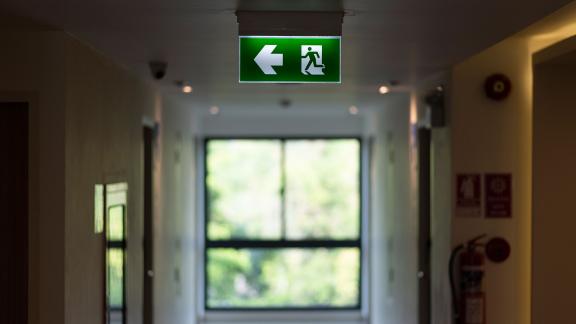How is the NHS performing this winter? 27 December to 2 January in review

At a glance
- Today’s figures add weight to concerns from NHS acute trusts about patient flow, with huge challenges discharging to both the care sector and other NHS services. On average, 58 per cent of inpatients no longer meeting the criteria to reside in hospital were not able to be discharged on the day.
- Patient flow issues then have a knock-on effect at the front door, with ambulance handover delays increasing close to record levels. Nearly 23 per cent of handovers took over 30 minutes, and almost 10 per cent over 60 minutes. These numbers reflect our members’ concerns that pressure across the system will inevitably start to impact patient safety.
- These difficulties are then exacerbated by staff shortages caused by COVID-19-related absence, which was up 41 per cent week on week in today’s release, and over 78 and 79 per cent in the north west, north east and Yorkshire respectively. These absences are impacting acute trusts and other services including the care sector, community services and primary care.
Patient flow
Discharge
Many members have reported challenges with discharging patients both to the care sector and other NHS services this week, which is evidenced in today’s figures.
On an average day week ending 2 January, 58 per cent of inpatients no longer meeting the criteria to reside in hospital were not able to be discharged on that day. This translates to an average of 9,858 patients per day who could be discharged but remained in hospital.
Of those, an average of nearly 4,500 per day had been in hospital for over 21 days, with only 8.9 per cent of these long-stay patients who were medically fit to leave being discharged on an average day.
This is a new dataset for this year, but the following chart shows the scale of the problem this winter with over 50 per cent of patients fit to discharge each week remaining in hospital:
Ambulance handover delays
Challenges with discharging and patient flow then have a knock-on effect to the front door. In the week ending 2 January, the data shows a significant rise in ambulance handover delays of over 60 minutes, which are up to 8,272 in total having dropped over the previous two weeks, as per the chart below. This equates to 9.89 per cent of all ambulances arriving, with 83,643 arrivals in total.
19,099 (22.8 per cent) handovers were delayed by over 30 minutes. The overall record was 19,503 delays over 30 minutes, set in week ending 12 December this winter, which was 22.6 per cent of all arrivals eclipsing 18,251 the week ending 5 January 2020.
Staff absence
The service is reporting extremely high levels of absence with the rises due to big increases in COVID-19-related absences. Today’s acute sector data shows 35,596 staff in England off on average per day due to COVID-19 (data for week ending 2 January). This is up 41 per cent compared to the previous week (25,273), with a number of trusts calling critical incidents due to staff shortages.
As below, some regions have seen much sharper increases than others. In the north east and Yorkshire COVID-19-related absence rose by 79 per cent, in the north west by 78 per cent, but in London this actually reduced by 4 per cent:
This rapid rise is evident in a comparison with last winter, with a steep curve from December 2021 to 2 January 2022. The average staff off in acute trusts per day is 35,596 , which is approaching the record of over 41,000 set in January in week 2 of 2021.
Total absence has averaged 80,295 per day for week ending 2 January, reaching over 87,500 on 30 December. But reports today as well as member feedback indicate this is only getting worse, with more than 92,000 reported absent on Wednesday 5 January.
As ever, the average figures hide substantial variation between trusts, with some organisations in significantly worse positions.
COVID-19 patients in hospital
These challenges are exacerbated by the rising number of patients in hospital in England with COVID-19, with 16,058 confirmed COVID-19 patients on 6 January; a 40 per cent increase compared to the previous week’s data. For context, the highest daily number of people positive for COVID-19 in hospital was over 34,000 in January 2021. There has also been an increase in percentages of patients ‘with’ COVID-19 in hospital compared to ‘for’ COVID-19. On the last date we have available data (28 Dec), 67 per cent of these patients were being treated primarily for COVID-19, but this averaged over 75 per cent in October and almost reached 80 per cent on some days in the summer.
However, high volumes of patients ‘with’ COVID still present problems with patient flows and infection prevention. One NHS leader told us it was deeply demoralising to keep talking about Omicron being milder, with even low rates of admissions creating huge pressure at the worst time of year for the service.
Bed occupancy
Bed occupancy has declined recently, with 89.7 per cent of adult general and acute beds occupied during week ending 2 January as the NHS made a conscious decision to create capacity for the potential wave of new patients that Omicron could generate. Earlier this winter, for instance in week ending 12 December, this was over 94 per cent. This reduction could be due to a number of factors, such as the cancellation of non-urgent elective surgery to ensure beds are free for COVID-19 patients, and staffing pressures as outlined above.
This pattern is also evident in adult critical care: 74.3 per cent of beds were occupied in this week’s data, when occupancy was regularly over 80 per cent prior to Christmas. This is likely due to efforts made by hospitals to clear critical care ahead of the rise in Omicron hospitalisations.
COVID-19 admissions
Patients being admitted to hospital meanwhile have again increased, albeit not by the same levels over the last week. The seven-day moving average for hospitalisations per day in England is 2,041, which is double the amount of hospitalisations per day as recently as 21 December. However, the rate of increase has slowed considerably and actually declined in London, where the seven-day average has fallen from a peak of 416 to 387 in the most recent figures from the gov.uk dashboard.



